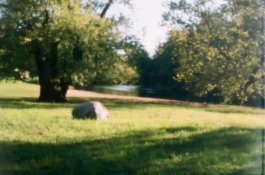dgphoto
Member
- Joined
- Jun 4, 2010
- Messages
- 13
- Format
- 35mm
Hi-
Relatively new to pinhole photography.
I use a Holga wide-angle pinhole that has an f-stop of ~128.
It seems like no matter what I do and no matter how I meter, I am always over or underexposed...I've tried using a photo-assistant app that has a pre-set for the Holga wide-angle, I've tried using the rough guidelines printed on the back of the camera, and I've tried a different metering app that I have...none seem to give me consistent results.
Unfortunately I don't have a real light meter.
To further compound my problem, I am headed to the coast in Washington's Olympic National Park in ~2 weeks and don't want to screw this opportunity up!
I currently have 100 TMAX and 400 TriX--unfortunately I missed the boat on loading up on Fuji Acros 100 before it was discontinued in the last year.
I develop film at home so I can test any recommendations prior to my trip.
Thanks in advance for any advice.
David
Relatively new to pinhole photography.
I use a Holga wide-angle pinhole that has an f-stop of ~128.
It seems like no matter what I do and no matter how I meter, I am always over or underexposed...I've tried using a photo-assistant app that has a pre-set for the Holga wide-angle, I've tried using the rough guidelines printed on the back of the camera, and I've tried a different metering app that I have...none seem to give me consistent results.
Unfortunately I don't have a real light meter.
To further compound my problem, I am headed to the coast in Washington's Olympic National Park in ~2 weeks and don't want to screw this opportunity up!
I currently have 100 TMAX and 400 TriX--unfortunately I missed the boat on loading up on Fuji Acros 100 before it was discontinued in the last year.
I develop film at home so I can test any recommendations prior to my trip.
Thanks in advance for any advice.
David





 - Tri-X might lead to inconveniently short and hard to time exposures.
- Tri-X might lead to inconveniently short and hard to time exposures.

